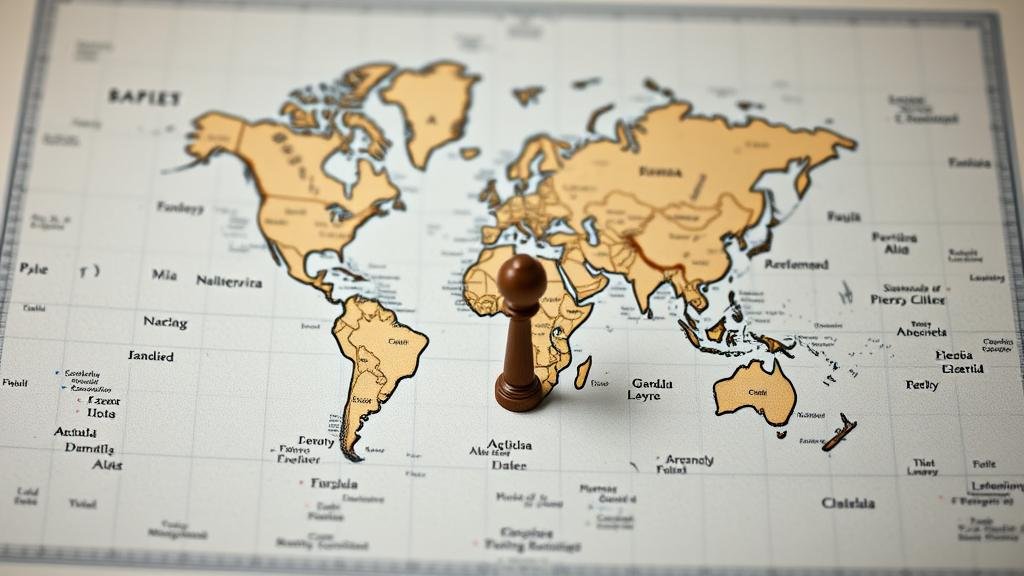How to Extract Latitude and Longitude From Riddles That Use Indirect Descriptions
How to Extract Latitude and Longitude From Riddles That Use Indirect Descriptions
The ability to extract geographic coordinates from riddles that use indirect descriptions is a fascinating skill that combines elements of critical thinking, problem-solving, and spatial awareness. This article aims to delve into methods for decoding such riddles, emphasizing analytical techniques, examples, and real-world applications. Understanding these principles can enhance navigation, cryptography, and even recreational activities like geocaching.
Understanding the Basics of Latitude and Longitude
Latitude and longitude are the primary coordinates used to pinpoint specific locations on the Earths surface. Latitude measures how far north or south a point is from the equator, while longitude measures how far east or west a point is from the prime meridian. Together, they form a coordinate system that simplifies global navigation.
- Latitude: Ranges from 0° at the equator to 90° at the poles.
- Longitude: Ranges from 0° at the prime meridian to 180° east or west.
Deciphering Indirect Descriptions
Riddles often employ metaphorical language and indirect descriptions to convey information. To decode these effectively, one must first identify key clues and contextual hints contained in the riddle. This can be done through various approaches:
- Keyword Identification: Focus on specific words or phrases that may hint at geographic features.
- Contextual Analysis: Consider the cultural or historical context that may inform the riddles meaning.
- Associative Thinking: Use analogies to connect indirect descriptions to concrete geographic concepts.
For example, if a riddle describes a river that flows into a larger body of water, it may indirectly suggest a specific geographic feature, such as the mouth of a river characterized by its coordinates.
Useing Analytical Techniques
Once key elements are identified, a structured methodology can be applied to extract latitude and longitude accurately. The following steps offer a practical framework:
- Step 1: Break Down the Riddle: Analyze each component individually to identify possible links to geographic features.
- Step 2: Map It Out: Use mapping software or geographic information systems (GIS) to visualize potential locations based on the identified clues.
- Step 3: Research Known Data: Cross-reference your findings with available geographic data to confirm or refute possible coordinates.
For example, let’s say a riddle states, In the city where four rivers meet. This description could guide the search toward a city like Mesopotamia, noted for its geographical significance. Further investigation through mapping tools can pinpoint precise coordinates.
Case Studies of Successful Geographic Riddle Solving
Real-world examples demonstrate how riddles can lead to latitude and longitude extraction. One notable instance is the use of riddles in treasure hunts. In 1982, the author Byron Preiss published The Secret, a book that combined puzzles and explicit geographic locations to lead hunters to hidden treasures across the United States and Canada. An essential aspect of these puzzles was their reliance on obscure indirect clues, which typically required solving multiple layers before arriving at accurate coordinates.
For example, a clue referring to a long stretch of water under the sun could refer to a specific lake known for its geographical features–Solving this might involve research into lakes situated in sunny regions, ultimately leading to specific latitude and longitude.
Common Challenges and Solutions
While solving geography-based riddles, several challenges can arise:
- Ambiguity: Riddles may use vague descriptions that apply to multiple locations.
- Cultural Misinterpretations: Without cultural context, the riddle may yield incorrect assumptions.
- Outdated Information: Geographic features may change over time, leading to outdated coordinates.
To address these challenges, it is advisable to consult regional maps, databases, and scholarly articles that provide current geographic data. Engaging in discussion with knowledgeable individuals can also foster insight into resolving ambiguities.
Actionable Takeaways
In summary, extracting latitude and longitude from riddles that use indirect descriptions involves a combination of analytical techniques, contextual awareness, and appropriate research tools. To refine this skill:
- Practice by solving various riddles and challenging yourself to articulate geospatial connections.
- Use online mapping services to explore regions based on clues from riddles.
- Continuously engage with communities or groups that share similar interests, enhancing collaborative problem-solving approaches.
Mastering the art of decoding geographic riddles not only cultivates a deeper understanding of spatial relationships but also enhances skills valuable in various fields, such as geography, tourism, and navigational technologies.



